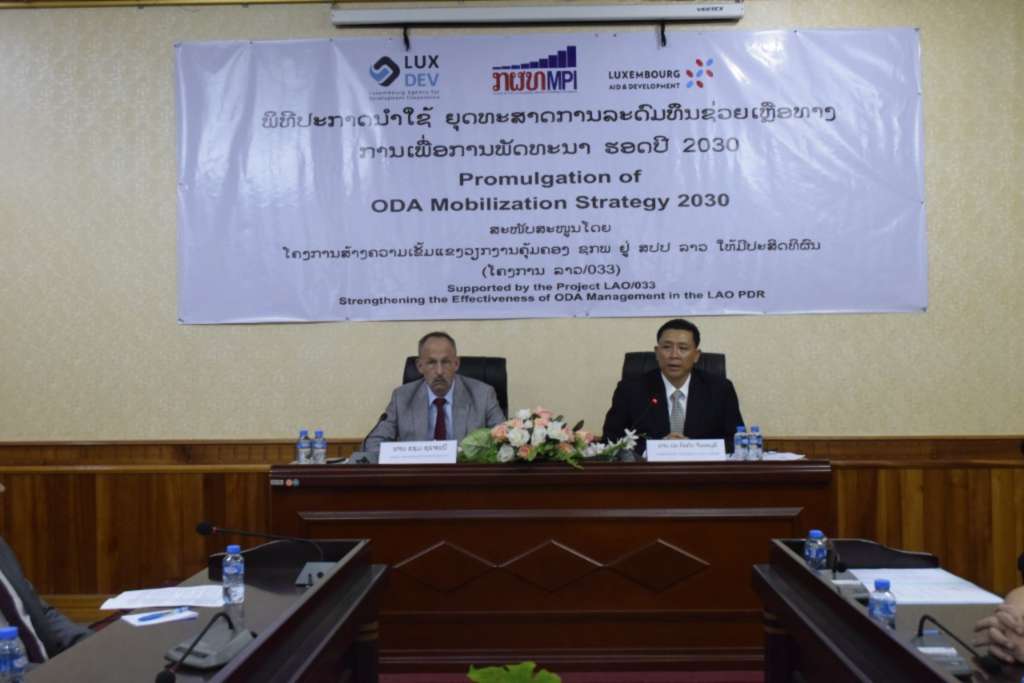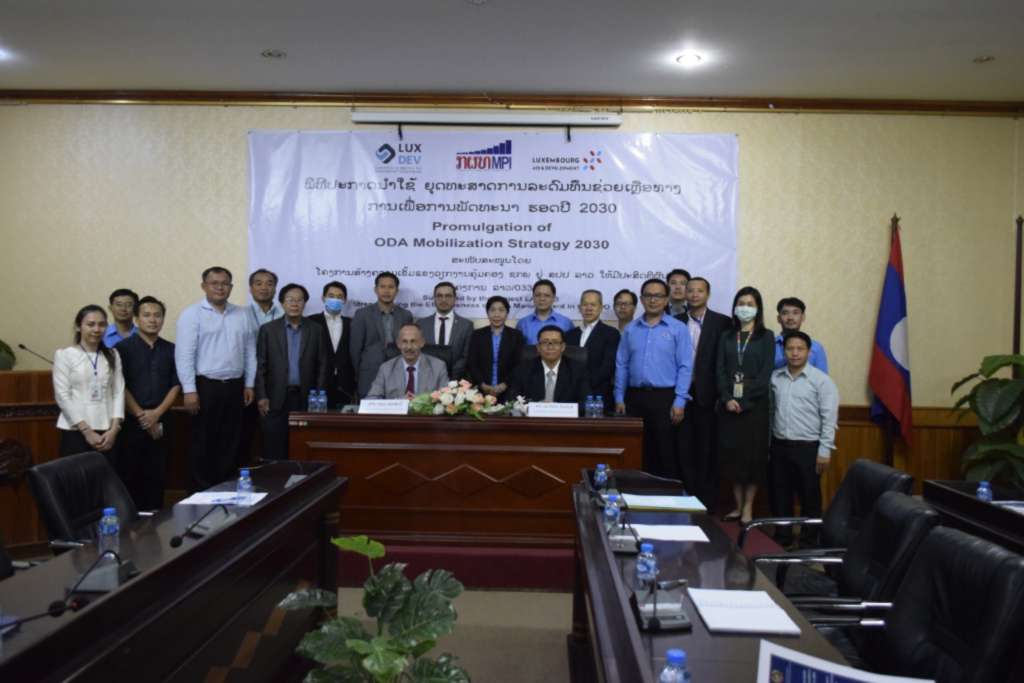LAOS - Rendering Official development assistance (ODA) coordination and management more effective
On 23 June 2020, the Ministry of Planning and Investment (MPI) officially launched the new ODA mobilisation strategy 2030. The promulgation ceremony took place in Vientiane Capital and was chaired by Dr. Kikeo Chanthaboury, Deputy Minister of MPI and co-chaired by Mr. Sam Schreiner, Chargé d´Affaires of the Embassy of the Grand Duchy of Luxembourg in Vientiane. The development of the ODA Strategy is part of the ongoing support provided by the Government of Luxembourg under the project LAO/033 - Strengthening the Effectiveness of ODA Management in the LAO PDR, which aims to increase the effectiveness of Lao key agencies in managing and coordinating ODA.

While there have been many achievements over the last years, there is still a need to continue improving development cooperation effectiveness in Lao PDR, to improve the effectiveness of the national Sustainable Development Goals (SDGs) Secretariat and strengthening MPI’s Department of International Cooperation’s capacity to manage ODA effectively as well as to further improve working practices with national and international stakeholders.
In order to manage ODA more effectively, there is a need to clarify the regulatory framework around ODA and to develop a comprehensive ODA mobilization strategy. Coordination with other actors, particularly the line ministries, provinces and the development partners needs to be strengthened.
The recent Mid-Term Review of the Lao PDR’s 8th National Socio-economic Development Plan (NSEDP) showed that, with the least-developed country (LDC) graduation expected by 2024, ODA will likely be declining in the next years. Therefore, it is even more important to adapt this new development context and to use ODA resources effectively.
For ODA to be a more effective resource for the implementation of the NSEDP and the SDGs, the key Lao agencies in charge of managing and coordinating ODA in the Lao PDR need to be able to carry out that role effectively.
Having more effective ODA financing for the implementation of the national development plan and the achievement of SDGs will naturally benefit the entire population of Laos, and in particular the poor.
The Lao government recognises the past difficulties of aligning development planning and financing. In the next cycle of the NSEDP, the government is committed to ensure that funding allocation is timely and aligned with the country’s overall development priorities.
Reflecting all ODA financed interventions in the national budgets is not only contributing to enhanced transparency, but also supports harmonisation of planning and financing. Ensuring public funding contribution provided by the government in ODA interventions will in turn cater for greater commitment of the Government and improved sustainability.

Developing an ODA Strategy will provide a vision and priorities for Department of International Cooperation (DIC) in terms of ODA management and coordination. Additionally, it will provide clarity on aspects such as ODA mobilisation, harmonisation of planning and financing, reflecting ODA in the budget, national funding for ODA interventions, among others.
At the event, Mr. Sam Schreiner also informed the participants, that the Embassy of Luxembourg to Lao PDR has officially launched the identification mission for the next Lao-Luxembourg medium-term development cooperation strategy, the Indicative Cooperation Programme V (ICP V). The next ICP seeks to deepen and strengthen the existing priorities of the Laos-Luxembourg development cooperation by further strengthening alignment with the SDGs and the Agenda 2030, as well as with the next NSEDP, in order to contribute to the overall goal of alleviating extreme poverty.
↑ Haut de la page
